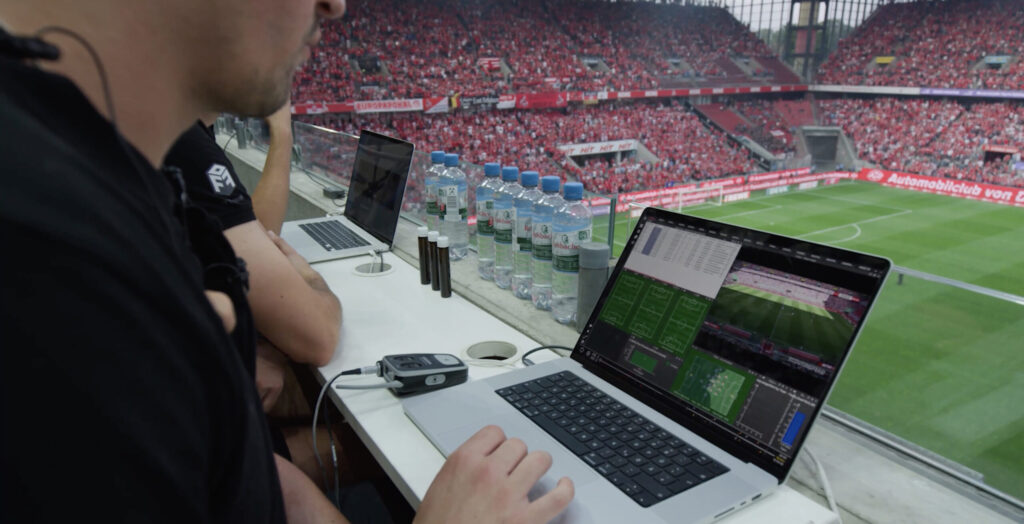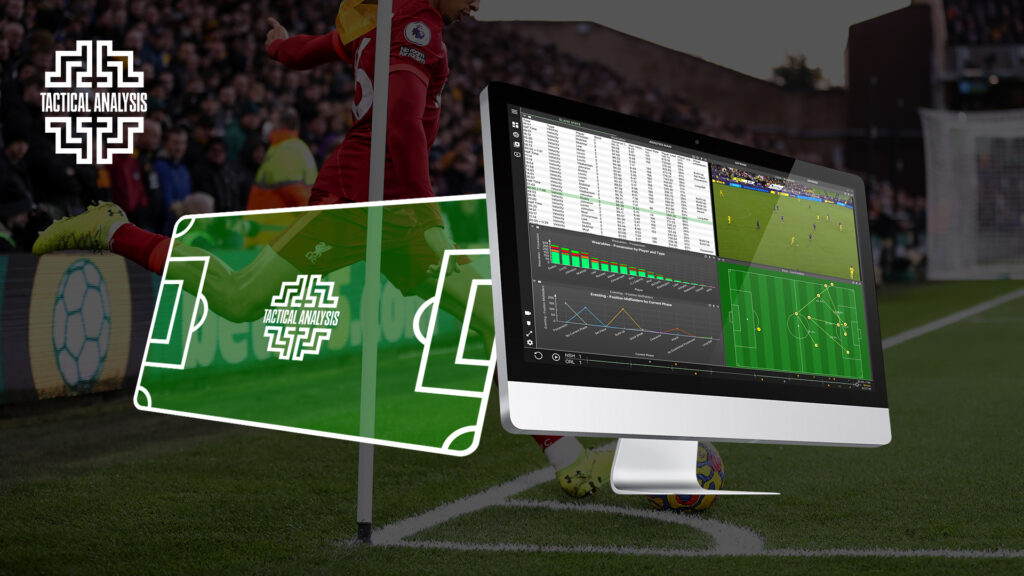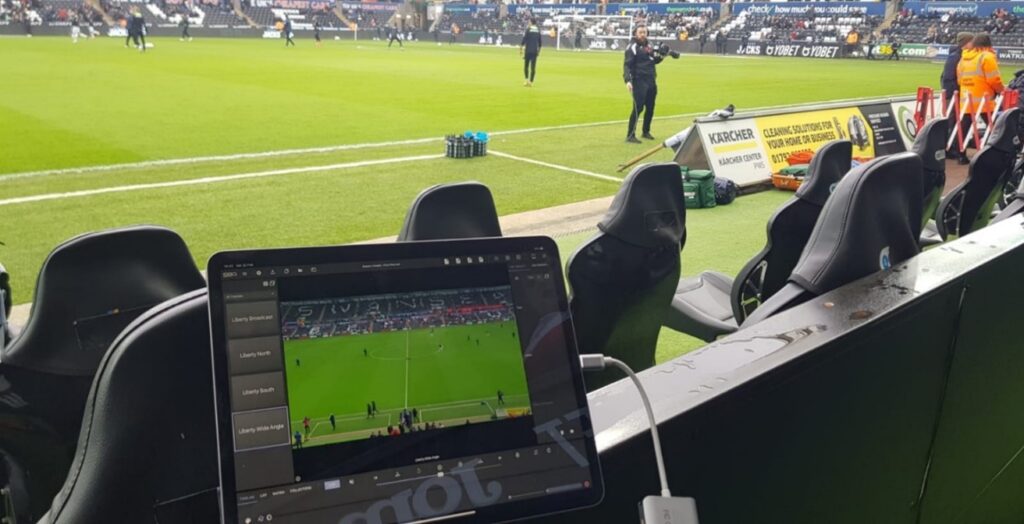Performance Analysis in Football: What is it & How it Improves Performance
In the highly competitive world of football, staying ahead of the competition requires more than just raw talent and hard work; it demands meticulous preparation and strategic planning. This is where performance analysis comes into play.
Performance analysis in football is an indispensable process that enables teams to dissect every aspect of the game, from player movements and team dynamics to opponent strategies and individual performances. By leveraging data and technology, teams can gain a comprehensive understanding of their strengths and weaknesses, leading to enhanced performance on the pitch.

Contents
- What is Performance Analysis?
- Performance Analyst: Roles and Responsibilities
- Role of Performance Analysis in Football
- Data-Driven Insights
- Performance Analysis Tools and Technologies
- Real-World Performance Analysis Resources
At its core, performance analysis contributes significantly to optimizing football players’ overall performance. Through detailed examination and insights, coaches and analysts can tailor training programs, develop tactical strategies, and make informed decisions during matches. This systematic approach ensures that every player and the team as a whole is operating at peak efficiency.
To illustrate the practical applications and benefits of performance analysis, watch the video below which features Luton Town FC. Their use of video analysis and performance insights spans various practitioner teams, providing a multi-faceted perspective on its impact. Watch the Luton Town video to hear from key figures about how performance analysis shapes their approach.
Performance analysis is invaluable for football teams for several reasons. It provides a detailed breakdown of match events and player statistics, allowing for precise evaluation and adjustments. Teams can identify patterns, understand the opposition, and prepare effectively for upcoming matches.
Moreover, it aids in injury prevention and recovery by monitoring player loads and physical exertion. Overall, performance analysis equips teams with the knowledge and tools needed to achieve excellence in football, making it a cornerstone of modern sports science and strategy.
What is Performance Analysis in Football?
Performance analysis in football is a systematic process of evaluating and enhancing player and team performance through the collection, examination, and interpretation of data. It involves breaking down every aspect of the game to provide actionable insights that can improve tactical and strategic decision-making.
Key Elements of Performance Analysis
- Player Movements: Tracking and analyzing player movements on the field to understand positioning, movement patterns, and physical exertion. This data helps in optimizing player roles and responsibilities during matches.
- Strategic Patterns: Identifying and evaluating team strategies and formations. By understanding how a team operates under various conditions, coaches can make informed adjustments to tactics and game plans.
- Opposition Analysis: Studying opponents’ strengths, weaknesses, and tactical approaches. This analysis is crucial for game preparation, allowing teams to develop strategies that exploit the opposition’s vulnerabilities.
- Post-Match Review: Analyzing game footage and statistics after matches to assess performance. This review helps in identifying areas for improvement and reinforcing successful tactics.
- Individual Player Analysis: Focusing on the performance of individual players to enhance their skills and contributions to the team. This includes monitoring physical metrics, technical skills, and psychological factors.
- Recruitment: Using performance data to identify and evaluate potential recruits. Performance analysis aids in scouting by providing objective data on player abilities and fit for the team’s strategy.
Performance analysis provides a comprehensive framework for continuous improvement in football. By leveraging data and technology, teams can gain a competitive edge, optimize player performance, and refine tactical approaches. This systematic approach ensures that every decision is backed by solid data, enhancing overall team performance.

For a deeper dive into performance analysis and how it can transform your team’s strategy, explore our Tactical Analysis Video Series. This series offers valuable insights and practical tips from experts in the field, helping you harness the full potential of performance analysis in football.
Performance Analyst: Roles and Responsibilities
Performance analysts play a crucial role in modern football, helping teams maximize their performance through data-driven insights. They collect and analyze data on players and matches, providing valuable information that helps coaches and players improve their game. Here are some key responsibilities of a performance analyst:
- Data Collection: Gathering data on player movements, match events, and other relevant metrics using various tools and technologies.
- Video Analysis: Reviewing game footage to analyze team strategies, player performance, and tactical execution.
- Reporting: Creating detailed reports and presentations that summarize findings and provide actionable insights for coaches and players.
- Opposition Analysis: Studying opponents to understand their strengths, weaknesses, and tactical approaches, helping the team prepare more effectively for matches.
- Player Development: Monitoring individual player performance to identify areas for improvement and track progress over time.
- Collaboration: Working closely with coaches, medical staff, and other team members to integrate performance data into training and match preparation.

What is the Role of Performance Analysis in Football?
The role of performance analysis in football is to provide a clear, objective view of how a team and its players are performing. This involves several key activities:
- Pre-Match Preparation:
- Role: Analyzing previous matches and training sessions to prepare for upcoming games.
- Process: Reviewing video footage, studying opponent tactics, and identifying key areas to focus on during the match.
- In-Game Analysis:
- Role: Monitoring live data and providing real-time feedback to coaches.
- Process: Using software to track player movements and game events, identifying trends and making tactical suggestions.
- Post-Match Review:
- Role: Evaluating team and player performance after the game.
- Process: Analyzing video footage, compiling performance reports, and discussing findings with the coaching staff.
- Training and Development:
- Role: Using performance data to guide training sessions and player development.
- Process: Identifying strengths and weaknesses, setting training goals, and tracking progress over time.
To see a performance analyst in action and understand more about their daily responsibilities, check out this video:
Football Match Analysis & Data-Driven Insights
In modern football, data-driven insights are pivotal for enhancing performance and gaining a competitive edge. Performance analysis relies heavily on data to provide objective, actionable insights that help teams and players improve. By collecting and analyzing various types of data, performance analysts can uncover patterns, make informed decisions, and optimize strategies.
Key Performance Metrics for Football Matches
Performance analysts collect a wide range of data to evaluate and improve team and player performance. Some of the key types of data include:
- Player Statistics: This includes individual player metrics such as distance covered, sprints, speed, and stamina. By tracking these statistics, analysts can assess physical performance and identify areas for improvement.
- Match Events: Detailed records of events during a match, such as goals, assists, tackles, interceptions, fouls, and set pieces. These events provide a comprehensive view of how the game unfolds and help in evaluating both individual and team performance.
- Positional Data: Tracking the positions and movements of players throughout the match. This data helps in understanding player roles, tactical execution, and spatial awareness on the field.

How Key Metrics Contribute to Football Match Performance Evaluations
- Possession:
- Importance: High possession can indicate control over the game and the ability to dictate its pace.
- Evaluation: Analysts look at the percentage of possession to understand how well a team maintains control and creates scoring opportunities.
- Passing Accuracy:
- Importance: Accurate passing is crucial for maintaining possession and building attacking plays.
- Evaluation: By analyzing passing accuracy, teams can identify the effectiveness of their passing game and work on improving coordination and precision.
- Shots on Target:
- Importance: This metric reflects the effectiveness of a team’s offensive play.
- Evaluation: A higher number of shots on target indicates more scoring opportunities and a greater likelihood of winning matches. Analysts review this data to improve attacking strategies and finishing skills.
- Defensive Metrics:
- Importance: Metrics like tackles, interceptions, and clearances are vital for assessing defensive performance.
- Evaluation: By analyzing these metrics, teams can identify strengths and weaknesses in their defensive setup and make necessary adjustments.
Data-driven insights transform raw data into meaningful information that teams can use to enhance their performance. By focusing on key performance metrics, analysts help coaches and players understand their game better, identify areas for improvement, and develop strategies that lead to success on the field.
Performance Analysis Tools and Technologies for Football Matches
Concerning football, performance analysis is heavily reliant on advanced tools and technologies that provide precise and comprehensive data. These tools help analysts, coaches, and players gain deeper insights into performance, enabling them to make informed decisions and optimize their strategies.
Football Player Monitoring
Player monitoring is a critical aspect of performance analysis, and Catapult offers some of the best solutions in this field. Here are the key tools used for monitoring football players:
- Vector Core: This device provides accurate and detailed data on player movements, including speed, distance, and acceleration. It helps coaches understand physical exertion and optimize training loads to prevent injuries.
- Vector Pro: An advanced version of Vector Core, Vector Pro offers additional features such as heart rate monitoring and collision analysis. It provides a more comprehensive view of player performance and health, making it an indispensable tool for teams aiming for peak performance.
Football Video Analysis Software
Video analysis is another cornerstone of performance analysis in football. It allows teams to visually review and assess every aspect of their gameplay. Catapult’s Pro Video suite is a leading solution in this area:
- Pro Video: This software integrates physical data with video footage, providing a holistic view of player and team performance. It allows analysts to tag and review key moments, create detailed reports, and share insights with the coaching staff. Watch the Pro Video demo to see how it transforms performance analysis.
Using these cutting-edge tools and technologies, football teams can gather extensive data, analyze it effectively, and apply the insights to enhance their performance on the field. Whether it’s monitoring player health and fitness or breaking down game footage to refine tactics, Catapult’s solutions are at the forefront of modern performance analysis.
→ Download our Pro Video Brochure, Today.

Real-World Performance Analysis Resources
To see performance analysis in action, several case studies and resources highlight how top football teams leverage these tools for success. Here are some notable examples:
FC Köln using Pro Video
FC Koln’s Head of Performance Analysis, Hannes Dold, praised the Catapult Pro Video suite for its intuitive, customizable, and efficient features. According to Dold, “The combination of different datasets connected to video to get better insights is critical for us. We use MatchTracker [part of the Catapult Pro Video suite] all week long, it’s important for practice planning. MatchTracker is a big help to get insights about key data and information to plan practice accordingly.”
Learning Resources and Integration Guides
Catapult offers a wealth of learning resources, courses, webinars, and success stories to help teams make the most of performance analysis. These resources are available in our learning library and webinar library, with highlights from our UNLEASH series.
One essential resource is the Integration Guide, which details how Catapult Pro Video integrates physical data with video, providing new context to both athlete and team performance. This guide, created in collaboration with product experts and sports scientists, offers advice on:
- Understanding how Catapult Pro Video integrates physical data with video.
- Discovering the top 5 workflows and supporting insights using integrated analysis.
- Leveraging insights to improve match performance and training design.
Performance Analysis Webinars
Our webinars offer practical insights and time-saving workflows for performance analysts. For instance, in the webinar 3 Key Workflows Save Analysts 50 Hours Each Gameweek, Steve Collins, a former Arsenal FC Analyst and current Catapult Customer Success Specialist, showcases three time-saving analysis workflows in MatchTracker. These workflows can save analysts up to 50 hours per week and include:
- Configuring the export setup with templates.
- Automating live tags and auto-tracking in presentations.
- General workbook building.
These resources provide a comprehensive look at how performance analysis tools and technologies are utilized in real-world settings, helping teams to continuously improve and stay ahead of the competition.
Performance Analysis in Football: Conclusion
Performance analysis in football is an essential practice that transforms data into actionable insights, enabling teams to enhance their strategies, optimize player performance, and achieve better results. The integration of advanced tools and technologies, such as those provided by Catapult, plays a critical role in this process.
As football continues to evolve, staying competitive requires leveraging these insights and continuously adapting to new developments in performance analysis. With the right resources and tools, teams can not only keep up with the competition but also set new standards in the sport.